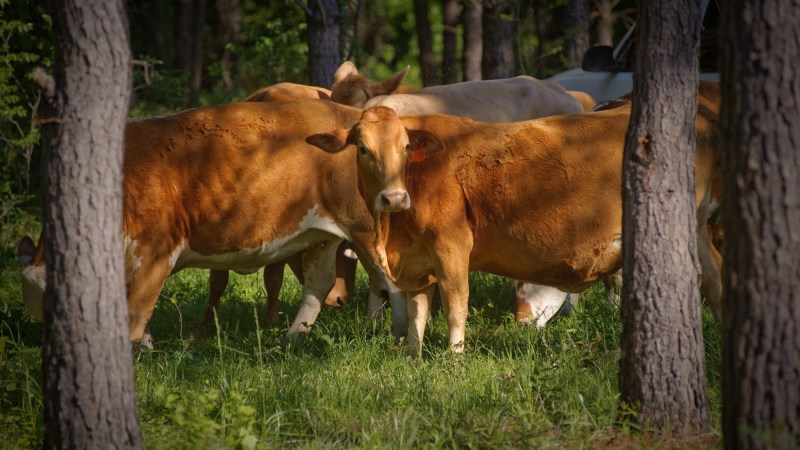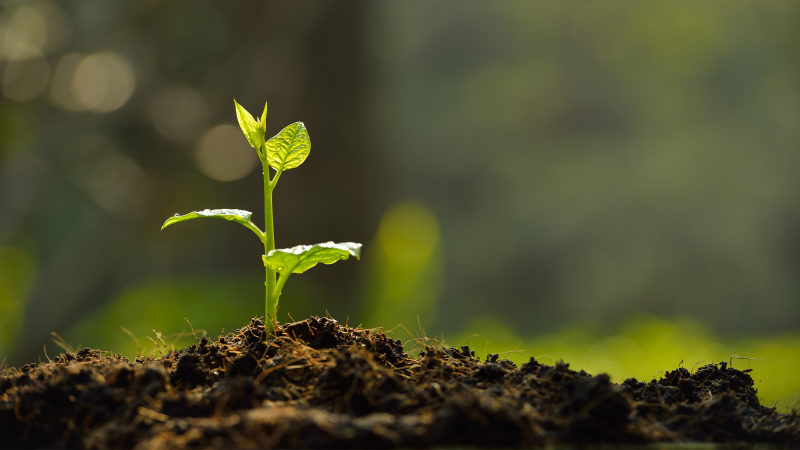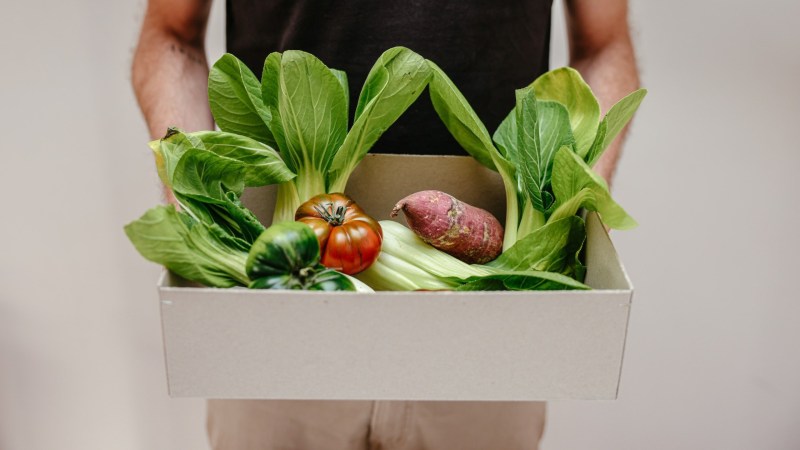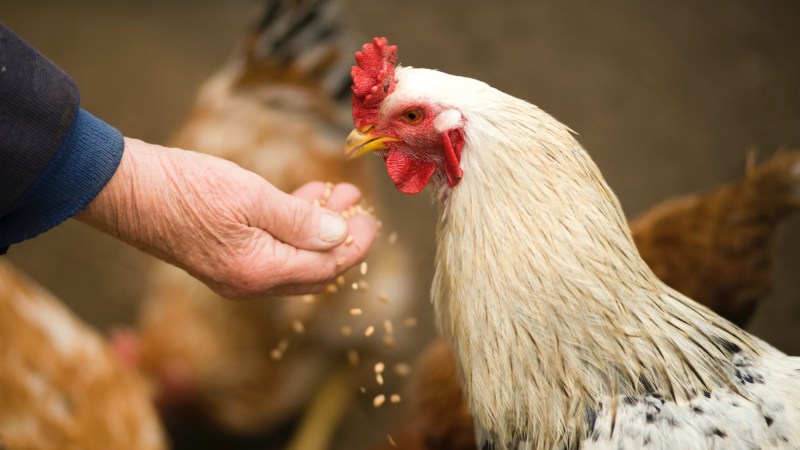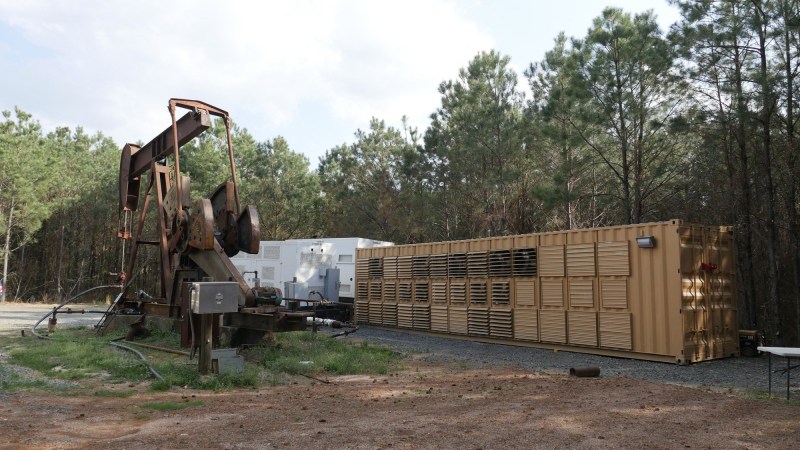

This story was originally published by Grist. Sign up for Grist’s weekly newsletter here.
Cattle play a colossal role in climate change: As the single largest agricultural source of methane, a potent planet-warming gas, the world’s 940 million cows spew nearly 10 percent of all greenhouse gas emissions—much of it through belches and droppings.
As such, there’s an astonishing amount of time and money being funneled into emission control. On-farm biodigesters, for example, take a backend approach by harvesting methane wafting from manure pits. A slew of research aims to curb bovine burps by feeding them seaweed, essential oils, and even a bovine Beano of sorts. The latest endeavor, a $70 million effort led by a Nobel laureate, uses gene-editing technology in an effort to eliminate that pollution by reengineering the animals’ gut microbes.
Given the world’s growing appetite for meat and dairy, these novel ventures are crucial to inching us toward international and national climate goals. Yet they beg the question: Wouldn’t it be easier to ditch milk, cheese, and beef for plant-based alternatives? Why fight nature when there’s an easier solution, at least from a scientific perspective?
Research shows that even a modest skew away from meat-based diets can shrink an individual’s dietary carbon footprint as much as 75 percent. As it turns out, however, untangling cows from the climate equation is enormously complicated—especially in the United States, where the industry, worth $275 billion annually, boasts the world’s fourth largest cattle population and is its top beef and dairy producer. Achieving a cheeseburger-free America faces formidable challenges. Beyond overcoming cultural shifts—the country’s per-capita consumption of mozzarella, to name one example, averages one pound a month—lies the challenge of meeting nutritional demands and rebalancing the intricacies of an agricultural, food, and industrial economy inextricably linked to livestock farming.
For these reasons, greener diets are but one prong in a larger set of food-based solutions for curtailing human-caused climate change, said Stephen Sturdivant, an environmental engineer at the Environmental Protection Agency. “We need a comprehensive combination of strategies to achieve a truly sustainable future,” he said. “We can’t just cherry-pick our way to get there.”
The nation’s taste for meat and dairy is undeniable. In addition to a steady, decade-long-rise in beef consumption, which hit 20 billion pounds in 2021, Americans gobbled up 12 percent more cheese, butter, and ice cream than in the previous year, continuing an upward trend that started half a century ago.
There’s a fundamental disconnect, though, between our growing demand for animal-based protein and its enormous carbon footprint. Producing a pound of steak generates nearly 100 times more greenhouse gas than an equivalent amount of peas, while cheese production emits eight times the volume of making tofu.
Although the American beef and dairy industries are among the most efficient in the world—due in part to better breeding, genetics, and nutrition—they still leave a significant hoofprint. The nation’s 92 million cattle generate 4 percent of the country’s total greenhouse gases and account for 40 percent of all agricultural emissions.
However, if those herds were to magically disappear, it wouldn’t eliminate the problem entirely. According to a peer-reviewed study, an animal-free agricultural system would shave just 2.6 percent off the country’s total greenhouse gas emissions. Of course, any reduction would be noteworthy given the nation’s outsized role in climate change—that drop would be equivalent to three times Portugal’s annual emissions—though that benefit would come with drawbacks.
With no livestock to feed, the acreage now used to grow silage and hay could be replaced with food crops. Yet because higher value fruits and vegetables require quality soil, specific climate conditions, and ample water infrastructure, most of that land would be limited to growing calorie-heavy, hardy broad acre crops such as corn and soybeans—a system change that would add its own climate impacts.
In fact, agriculture’s current emissions are a result of a certain balance between crops and livestock, said Robin White, a professor of animal and poultry science at Virginia Tech and the lead author of the research. Crops need fertilizer, a resource often provided by livestock, and producing synthetic versions is an energy-intensive process that typically requires fossil fuels and emits methane. Cattle also help keep agricultural byproducts—from fruit peels and pulp to almond hulls and spent brewery grains—out of landfills, reducing the carbon output of crop waste by 60 percent.
Eliminating the nation’s cattle and replacing feed production with food crops would create more food, White said, resulting in a caloric surplus of 25 percent. That abundance, however, would come with deficits in essential nutrients, as plant-based foods tend to fall short in vitamin B12, calcium, iron, and fatty acids. (Although existing studies reflect good long-term health in vegetarians, research on those who eschew all animal-derived foods is inconclusive.)
Larger discussions around sustainability tend to overlook these complexities, said White. Food insecurity is often tied to caloric sufficiency, but doesn’t always reflect nutritional needs, particularly those of vulnerable populations. Pregnant, lactating, and elderly women, for example, are susceptible to anemia and low bone density, mainly due to inadequate iron and calcium intake—nutrients readily available in red meat and dairy products, and easily accessible to large swaths of the population.
“These types of nuances get lost,” said White, when we focus exclusively on the broader metrics of diet change. While balanced choices can work for individuals, keeping the country adequately fed and healthy is a complicated endeavor. “There’s an entire agricultural system behind that food production,” she added, and changing the pieces within it requires careful examination.
Given the scale of the beef and dairy industries, the central role they play in feeding people, and the difficulty of removing them from the economy, cattle clearly aren’t moving on any time soon. For that reason, there’s been no shortage of resources aimed at, quite literally, the gut of the emissions issue.
As with most ruminants, cattle make the most of a paltry diet, converting cud, grains, and crop waste into muscle and milk. Extracting all that energy from cellulose and plant fibers requires the work of digestive microbes; cow rumens host entire colonies of bacteria, yeast, and fungi that ferment complex carbohydrates into microbial protein, which they then absorb, and volatile fatty acids, which they expel as methane and other gases.
Several dietary supplements have been shown to minimize bovine bloating. A twice-daily garlic and citrus extract can cut emissions by 20 percent, while a red seaweed additive can inhibit them by as much as 80 percent without impacting animal health or productivity or imparting detectable flavor to the resulting proteins. But having a transformative impact will require industrial-scale production and implementation. The promising strain of seaweed, for instance, prefers tropical waters, and developing a supply chain robust enough to serve tens of millions of cattle with a daily intervention leaves a trail of unanswered questions regarding effective farming, processing, and distribution techniques.
Ultimately, tinkering with the animals’ digestive system may hold the most scalable answer. Jennifer Doudna, who won the 2020 Nobel Prize in chemistry for pioneering the CRISPR gene-editing tool, is leading a University of California team that hopes to do just that. The recently launched project aims to identify the offending gut bacteria through metagenomics, another breakthrough technology that maps the functions of complex microbial communities, then restructure their DNA to produce less methane. The goal is to develop an oral treatment for calves that, once administered, will continue repopulating their rumen with the genetically modified microflora.
“We’re trying to come up with a solution to reduce methane that is easily accessible and inexpensive,” Matthias Hess, an associate professor at UC Davis and a project lead, said in an interview. It’s a fix that, if successful, could make a serious dent in tamping down cattle emissions the world over.
Their mission launched earlier this year, funded by the TED Audacious Project. Along with livestock, microbiomes generate nearly two-thirds of global methane emissions through landfills, wastewater, and rice paddies. If successful, “our technology could really move the needle in our fight against climate change,” Doudna said in a recent TED Talk.
Even as science tries making cows more climate-friendly, the tide of consumption has seen a steady shift. In the last two years, the majority of Americans have upped their intake of plant-based foods, with almost half of millennials and Gen Z-ers regularly eating vegan. But there’s also been another notable tip in the scale: Just 12 percent of the country eats half the nation’s beef. And for many in the meat-heavy minority, the perils of climate change seem to do little in nudging them toward planet-friendlier meals.
A global study of factors that encourage greener diets found that climate risk perception is but one influencing factor, along with health implications and economic circumstances. Yet it’s the people around us, said Sibel Eker, the report’s lead author, who hold the most sway in changing individual attitudes, beliefs, and values—in other words, there’s power in herd mentality.
“If there are more vegetarians or flexitarians around you, you tend to think that this is the norm in society,” said Eker, a sustainable service systems researcher at the International Institute for Applied Systems Analysis in Austria. “So if you have the intention of changing your behavior, the social cost [to do so] becomes lower.”
In fact, when it comes to influencing environment-related behaviors such as recycling and ditching cars, social norms and comparisons are incredibly effective, far outpacing other drivers such as financial incentives and public appeals, according to a separate study by the U.S. National Academy of Sciences. And positive visibility and reinforcement — by individuals, a community, or mass and social media—do more to encourage climate action than shaming people who aren’t fully on board, Eker said. Otherwise, it just makes the matter alienating and polarizing.
In the end, the overarching nature of the food system requires a collective approach to shrinking its enormous emissions. While there’s no denying the outsized environmental footprint of animal-based foods, dietary shifts are part of a much larger strategy around food-based climate action, said the EPA’s Sturdivant. Along with improved farming practices such as maximizing yields and minimizing inputs, reducing food loss and waste is just as critical. And for these reasons and more, meatless Mondays, vegan Fridays, and less polluting cows all have their place in mitigating the role cattle play in warming the world.
Correction: This story has been updated to note that even a modest skew away from meat can reduce an individual’s dietary carbon footprint by as much as 75 percent.
This article originally appeared in Grist at https://grist.org/agriculture/why-cant-we-just-quit-cows/.
Grist is a nonprofit, independent media organization dedicated to telling stories of climate solutions and a just future. Learn more at Grist.org


